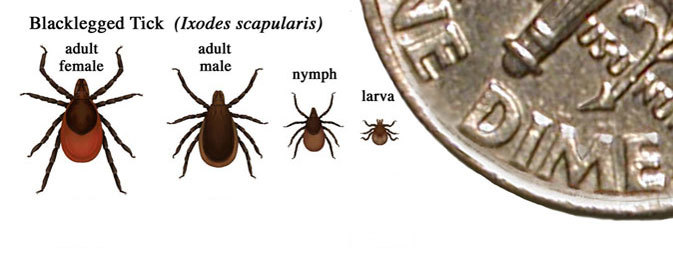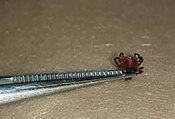News Release: Ticks spread diseases - How to prevent tick bites
Ottawa County, Michigan sent this bulletin at 05/24/2017 11:08 AM EDT
|
|
|
|
Media contacts: Kristina Wieghmink, Communications Specialist Jessica VanGinhoven, Communications Specialist |
|
Ticks spread diseases - How to prevent tick bites
In Michigan, Lyme disease is the most commonly reported tick-borne disease. It is spread by an infected blacklegged (deer) tick. Most humans are infected through the bites of immature ticks called nymphs that feed during the spring and summer months. Nymphs can be difficult to see since they are approximately the size of a poppy seed. In most cases, the tick must be attached for 36 to 48 hours or more before the Lyme disease bacterium can be transmitted. “Prompt removal of ticks is the best method to decrease the chance of Lyme disease,” said Dr. Paul Heidel, the medical director of the Ottawa County Department of Public Health. “Seek medical attention if you develop a fever, a rash, severe fatigue, facial paralysis, or joint pain within 30 days of being bitten by a tick.”
|
The most important way to protect against Lyme disease is to prevent tick bites. |
Avoid direct contact with ticks
-
Walk in the center of trails.
-
Avoid wooded and brushy areas with high grass and leaf litter.
-
Create tick-safe zones in your yard. Keep patios and play areas away from vegetation, regularly remove leaves, clear tall grasses and brush around home, place wood chips or gravel between lawns and wooded areas, and use a chemical control agent.
Use insect repellent
-
Apply repellent containing DEET (20-30 percent) or Picaridin on exposed skin.
-
Treat clothing and gear (such as boots, pants, socks and tents) with products containing 0.5% permethrin. Do not use permethrin directly on skin.
-
Always follow the manufacturer’s instructions when applying any repellents.
Find and remove ticks
-
Bathe or shower after being outside in tick-infested areas (preferably within two hours).
-
Conduct a full-body tick check (under arms, in and around ears, inside belly button, behind knees, between legs, around waist and especially in hair).
-
Examine gear and pets. Ticks can ride into the home on clothing and pets, and then attach to a person later. Use tick prevention products on your pets.
-
Wash clothing in hot water and dry on high heat after being outside to kill ticks.
-
Use fine-tipped tweezers to grasp the tick as close to the skin’s surface as possible. Pull upward with steady, even pressure. Don’t twist or jerk the tick; this can cause the mouth parts to break off and remain in the skin. Clean the area with rubbing alcohol, an iodine scrub or soap and water.
|
|
|
“Tick checks are recommended after any hike, but especially one along the lake shore,” said John Scholtz, the director of Ottawa County Parks & Recreation. |
|
|
|
|
|
|
For more tick and Lyme disease information, please visit www.cdc.gov/lyme or www.michigan.gov/lyme.
Guide - Ticks and your health: Preventing tick-borne illness in Michigan
Fact sheet - How to prevent tick bites when hiking and camping
Having trouble viewing this email? View it as a Web page.





